Coldest Places in Pakistan – Top Winter Destinations & Snowfall Spots
Published: 03/03/2025
The Coldest Places in Pakistan are known for their breathtaking winter landscapes and thrilling adventures. Most of these locations are in the northern regions, where the Himalayas, Karakoram, and Hindu Kush mountain ranges dominate the landscape.
These areas experience extreme winter temperatures but offer stunning views and unforgettable travel experiences. Whether you are an adventure enthusiast, a nature lover, or someone looking to experience the magic of snowfall in Pakistan, these destinations offer something for everyone.
Winter tourism in Pakistan is growing rapidly, attracting travellers who love snowy landscapes and adventure sports.
Let’s explore some of the coldest places in Pakistan and their nearby attractions!
Are you ready?
What Makes the Coldest Places in Pakistan Special?
The coldest places in Pakistan are not just about freezing temperatures but about unique experiences, breathtaking beauty, and thrilling adventures. Here’s what makes them so unique:
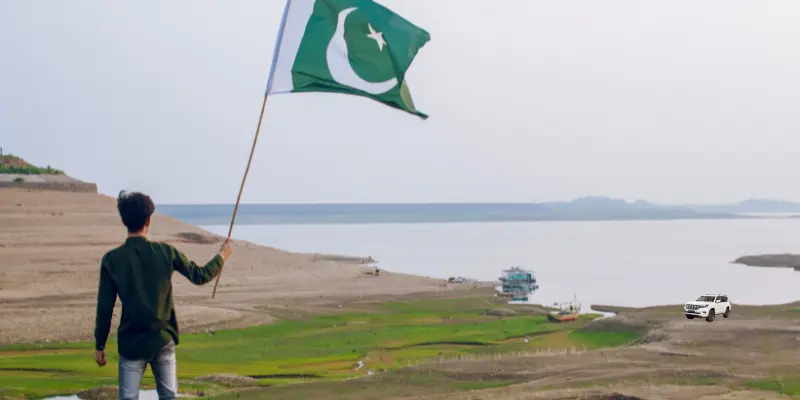
- Snow-Capped Mountains: These regions are surrounded by some of the world’s highest peaks, including K2, Nanga Parbat, and Rakaposhi, offering jaw-dropping views. Many of these spots are famous high-altitude destinations in Pakistan.
- Frozen Lakes and Rivers: Lakes like Rama Lake and Sheosar Lake freeze in winter, creating magical icy landscapes. These frozen lakes in Pakistan are a sight to behold.
- Adventure Opportunities: From skiing in Naltar to trekking in Deosai, these places offer some of the best winter adventures in Pakistan. Adventure travel in Pakistan is a dream for thrill-seekers.
- Cultural Richness: Destinations like Hunza and Chitral glimpse Pakistan’s diverse cultures and traditions. Many places also host cultural festivals, celebrating the region’s unique traditions.
- Peace and Serenity: These cold regions provide a peaceful nature retreat from the hustle and bustle of cities.
- Unique Wildlife: Places like Deosai National Park are home to rare species like the Himalayan brown bear.
- Photography Paradise: The snowy landscapes, frozen waterfalls, and icy rivers make these places a dream for photographers. Many of these locations are top photography spots in Pakistan.
- Starry Nights and Aurora-Like Views: The clear, unpolluted skies in these high-altitude regions make them perfect for stargazing and, at times, even witnessing rare aurora-like light phenomena.
- Traditional Winter Foods: Experience warm local delicacies like Hunza’s Mamtu (steamed dumplings) and Chitrali soup, which add to the winter charm.
- Festivals and Local Celebrations: Many regions have traditional winter festivals, where you can witness cultural music, dance, and sports like polo on frozen lakes.
These elements make Pakistan’s coldest places not just travel destinations but unforgettable experiences!
1. Skardu
Temperature: As low as -20°C in winter
Skardu, a stunning valley in Gilgit-Baltistan, is a gateway to some of the world’s highest peaks, including K2, Broad Peak, and Gasherbrum. In winter, the valley becomes a mesmerizing landscape of frozen lakes, snow-covered mountains, and icy roads.
Despite the freezing temperatures, Skardu’s remarkable beauty attracts adventure seekers for trekking, skiing, and winter photography, making it a must-visit for winter tourism in Pakistan.
Nearby Attractions: Deosai National Park, Upper Kachura Lake, Shigar Fort, Khaplu Valley
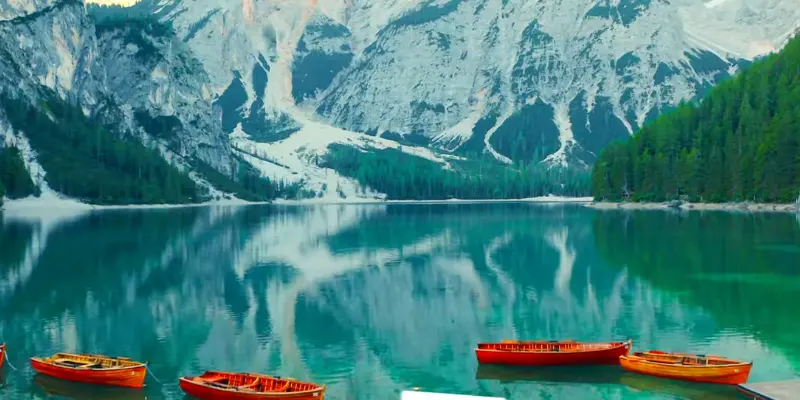
2. Astore Valley
Temperature: Drops to -15°C in winter
Astore Valley near Nanga Parbat is a hidden gem offering some of Pakistan’s most picturesque winter landscapes. The valley is surrounded by towering peaks and thick forests blanketed in winter snow.
The famous Rama Lake, with its frozen waters, looks magical. Visitors can enjoy winter treks, cosy bonfire nights, and an escape into nature away from city life. High-altitude destinations in Pakistan, like Astore, are perfect for adventure travel.
Nearby Attractions: Minimarg, Domel Valley, Rupal Valley, Rama Meadows
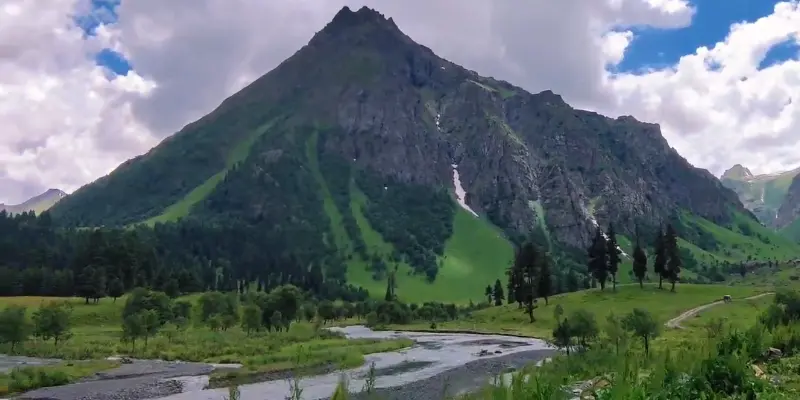
3. Kalam Valley
Temperature: Falls to -10°C during winter
Nestled in the heart of Swat, Kalam Valley is one of Pakistan’s most visited winter destinations. The valley is covered in thick snow during the colder months, making it ideal for winter tourism. Snow-capped peaks, frozen waterfalls, and charming wooden houses add to the valley’s beauty.
Many visitors take 4×4 rides through the snow or enjoy a warm cup of tea while admiring the stunning views. Cold-weather travel tips can be helpful for those planning a visit during peak snowfall.
Nearby Attractions: Mahodand Lake, Ushu Forest, Matiltan, Utror Valley
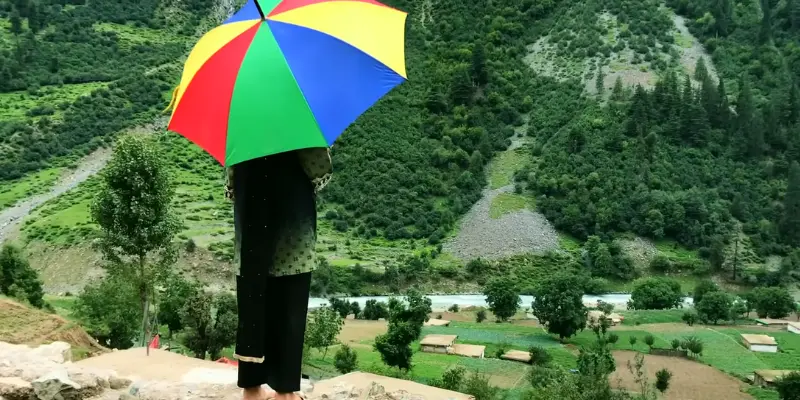
4. Naltar Valley
Temperature: Often below -10°C in winter
Naltar Valley is one of Pakistan’s most beautiful winter destinations near Gilgit. Known for its ski resort, this valley has become a hub for skiing enthusiasts nationwide.
The colourful Naltar Lakes, which remain frozen in winter, contrast the surrounding white landscape. If you’re looking for top photography spots in Pakistan, Naltar should be on your list.
Nearby Attractions: Naltar Lakes, Fairy Meadows, Hunza Valley, Gilgit
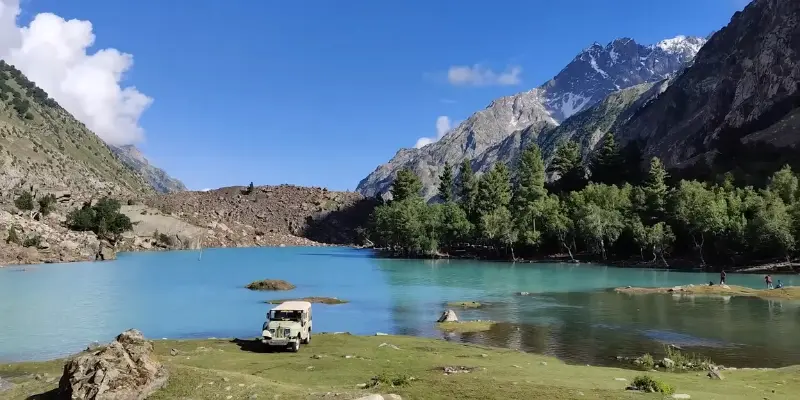
5. Murree & Galyat
Temperature: Ranges from -5°C to -10°C in winter
Murree and the surrounding Galyat region are among the most accessible winter destinations from Islamabad. With heavy snowfall in the winter months, the area becomes a snowy paradise filled with tourists enjoying the cold weather.
Many cultural festivals in Pakistan occur during winter, attracting visitors from across the country.
Nearby Attractions: Nathia Gali, Dunga Gali, Bhurban, Ayubia National Park
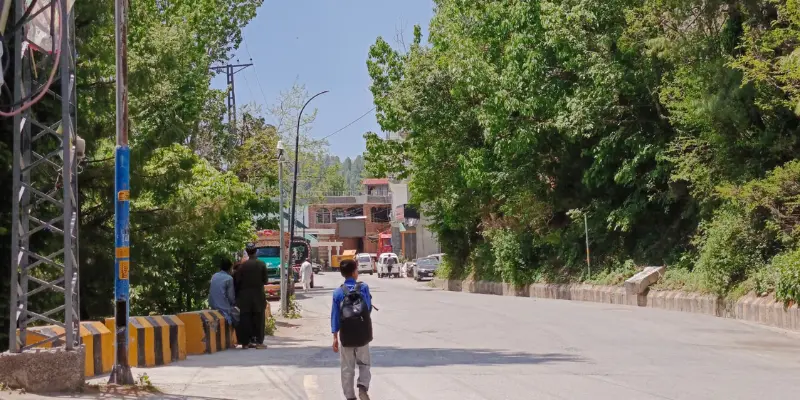
6. Chitral
Temperature: Drops to -10°C or lower
Chitral, a valley rich in culture and history, turns into a winter wonderland when temperatures drop. The region is home to the Kalash Valley, where unique traditions are celebrated even in the harsh winter.
Snow-covered mountains and frozen rivers make the valley a paradise for nature lovers and adventure travellers. The Shandur Pass, one of the highest polo grounds in the world, is another stunning location that remains covered in snow for months.
Nearby Attractions: Shandur Pass, Garam Chashma, Tirich Mir, Kalash Valleys
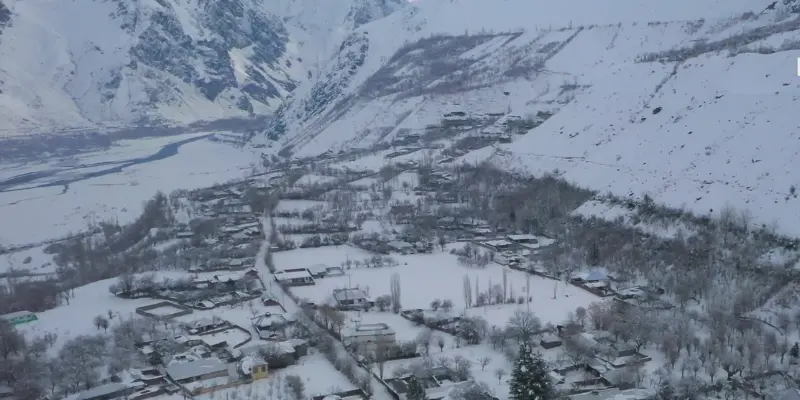
7. Hunza Valley
Temperature: Often -10°C in winter
Hunza Valley is one of Pakistan’s most mesmerizing winter destinations. Famous for its stunning views of Rakaposhi, Ultar Sar, and Passu Cones, the valley transforms into a serene snowy retreat during the colder months.
The historical forts of Altit and Baltit look even more enchanting when covered in snow, making them perfect spots for history and photography lovers.
Nearby Attractions: Altit and Baltit Forts, Attabad Lake, Eagle’s Nest, Passu Glacier
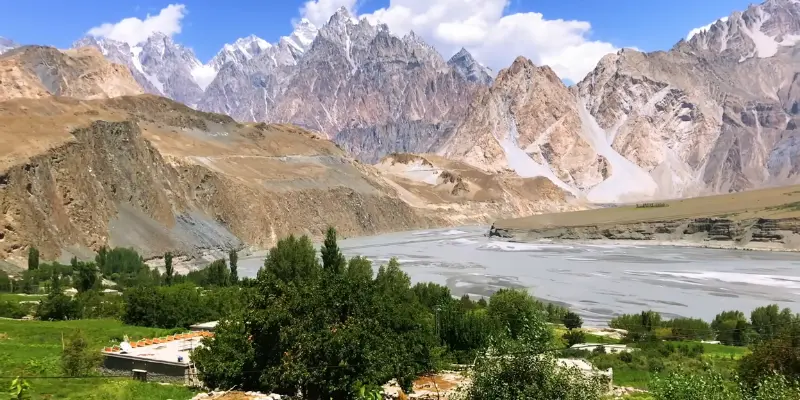
8. Deosai National Park
Temperature: Can drop to -30°C in winter
Known as the “Land of Giants”, Deosai National Park is one of the coldest places in Pakistan. Located at over 4,000 meters, it remains covered in snow for most of the year. The vast snow-covered plains in winter make it an untouched paradise for adventure seekers.
The freezing temperatures and harsh conditions make it a challenging yet rewarding destination for those who love extreme winter landscapes.
Nearby Attractions: Sheosar Lake, Bara Pani, Chilim Valley, Skardu
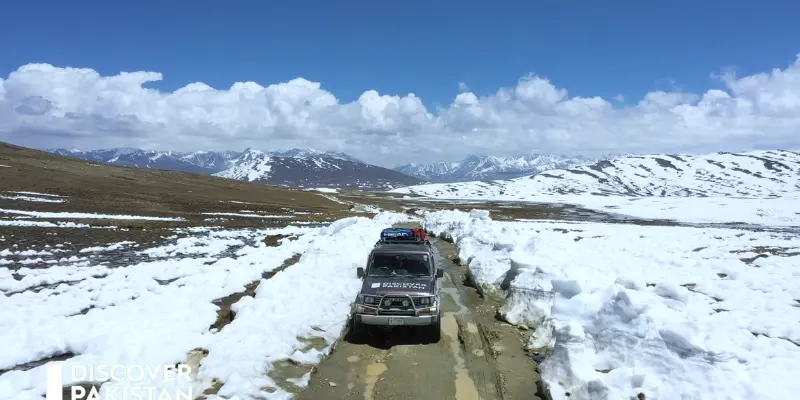
9. Ziarat
Temperature: Falls below -5°C in winter
Ziarat, located in Balochistan, is famous for its Juniper Forest Reserve, one of the oldest juniper forests in the world. During winter, the town is blanketed in snow, turning it into a magical retreat.
Visitors can explore the Quaid-e-Azam Residency, where Pakistan’s founder spent his last days, or take in the remarkable views from Prospect Point.
Nearby Attractions: Prospect Point, Zizri Valley, Sandeman Tangi, Juniper Forest

10. Siachen Glacier – The Coldest Place in Pakistan
Temperature: It plunges to 50°C in winter!
Siachen Glacier, located in the Karakoram range, is the coldest place in Pakistan and one of the harshest environments on Earth. This high-altitude battlefield, where Pakistani and Indian troops are stationed, experiences extreme weather conditions year-round.
While civilians cannot visit the glacier, it remains an awe-inspiring part of Pakistan’s geography.
Interesting Fact: Despite its deadly cold, Siachen is the source of several rivers, including the Indus.
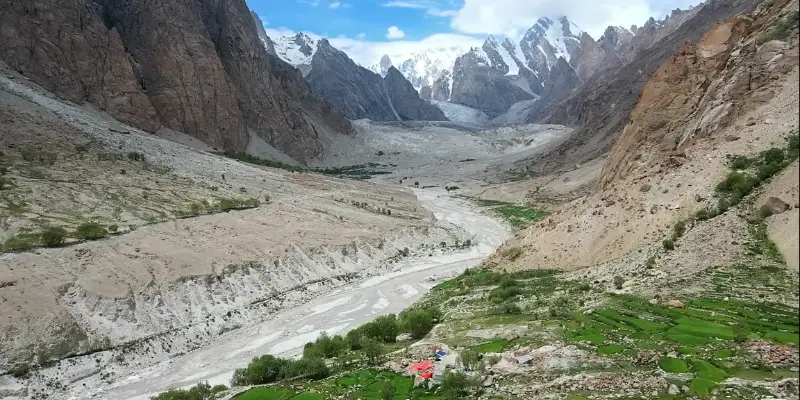
Visiting the coldest places in Pakistan promises an unforgettable adventure. Still, proper planning and preparation are essential to ensure a safe and enjoyable trip. Here are some key tips:
- Pack Warm Clothes: Temperatures can drop to extreme lows, so pack thermal wear, gloves, hats, and heavy jackets. Waterproof boots are also a must for walking in the snow.
- Check Weather Conditions: Winter weather can be unpredictable, with sudden snowstorms and roadblocks, so always check the forecast before travelling.
- Travel in Groups: Some of these destinations are remote and isolated, so it’s safer to travel with a group or a guide.
- Stay Hydrated: Cold weather can dehydrate you quickly, even if you don’t feel thirsty. Drink plenty of water.
- Be prepared for Altitude Sickness: High-altitude destinations like Deosai and Skardu can cause altitude sickness. Take necessary precautions, such as acclimatizing properly and carrying medication if needed.
- Carry Essentials: If you travel to remote areas, pack a first-aid kit, power bank, extra snacks, and emergency supplies.
- Respect Local Culture: Many regions have unique customs, languages, and traditions. Be respectful, dress modestly, and follow local customs.
- Plan Your Route: Some areas may be inaccessible due to heavy snowfall, so check road conditions and plan your route in advance. Keep emergency contacts handy.
- Have Backup Power and Connectivity: Many regions have limited electricity and weak mobile signals. Carry extra batteries and a power bank, and download offline maps.
- Book Accommodation in Advance: Many guesthouses and hotels have limited winter operations, so confirm your stay before travelling.
- Fuel Up Your Vehicle: If driving, ensure your vehicle has snow chains and enough fuel, as petrol stations may be scarce in remote areas.
- Be Cautious around Fires and Heaters. Using gas heaters or bonfires, ensure proper ventilation to prevent carbon monoxide poisoning.
By following these tips, you can enjoy the breathtaking winter beauty of Pakistan while staying safe and comfortable
Final Thoughts
Pakistan’s coldest places offer more than freezing temperatures; they perfectly blend adventure, beauty, and unforgettable experiences. Whether you’re a snow lover, an adventure enthusiast, or someone seeking tranquility, these destinations have something magical.
From the snow-capped mountains of Skardu to the icy plains of Deosai, every location offers a unique winter experience. Pack your warm clothes, grab your camera, and explore Pakistan’s winter magic!
Have you visited any of these places? Share your experience in the comments!
FAQs
Siachen Glacier is the coldest place in Pakistan, with temperatures plummeting to 50°C in winter. While it’s not open to tourists due to its status as a high-altitude battlefield, other destinations like Skardu and Deosai offer equally thrilling winter experiences.
Winter (December to February) is best for snowfall lovers and adventure seekers. However, if you prefer milder cold with accessible roads, October to November or March to April are ideal. Some areas, like Deosai, remain inaccessible due to heavy snow in peak winter.
Yes, but proper planning is necessary. Snowfall can block roads, so check weather updates before travelling. Carry warm clothes and emergency supplies, and travel in groups for safety.
Murree and the Galyat region are the most accessible winter destinations from Islamabad. They offer snow-covered landscapes, tourist facilities, and various attractions. Other easy options include Naran (if roads are open) and Ziarat in Balochistan.
Pack warm clothes, thermal wear, gloves, waterproof boots, and a heavy jacket. Also, carry power banks, first-aid kits, and emergency food supplies, especially for remote areas. Snow chains for vehicles are necessary if you’re driving.
Yes! Lakes like Sheosar Lake, Rama Lake, and Attabad Lake freeze during winter, creating magical views. Visiting them requires proper winter gear and checking accessibility beforehand.
Yes, but some places have limited options in extreme winter. Always book accommodations in advance, especially in remote areas like Deosai and Astore. Popular spots like Murree and Skardu have open hotels throughout the year.
Naltar Valley is great for skiing, while Deosai and Astore offer challenging winter treks. Skardu and Hunza are best for winter photography and cultural experiences. Some regions also offer jeep rides and snow hiking.
Yes, Murree, Hunza, and Skardu have family-friendly accommodations and activities. However, icy and remote areas like Deosai and Siachen are better suited for experienced travellers. Always check road conditions and facilities before planning a family trip.
Yes, many northern areas experience heavy snowfall in the winter. Murree, Skardu, Chitral, and Naltar Valley are popular spots for witnessing snowfall. The best time to see fresh snow is between December and February.

- Be Respectful
- Stay Relevant
- Stay Positive
- True Feedback
- Encourage Discussion
- Avoid Spamming
- No Fake News
- Don't Copy-Paste
- No Personal Attacks

- Be Respectful
- Stay Relevant
- Stay Positive
- True Feedback
- Encourage Discussion
- Avoid Spamming
- No Fake News
- Don't Copy-Paste
- No Personal Attacks



